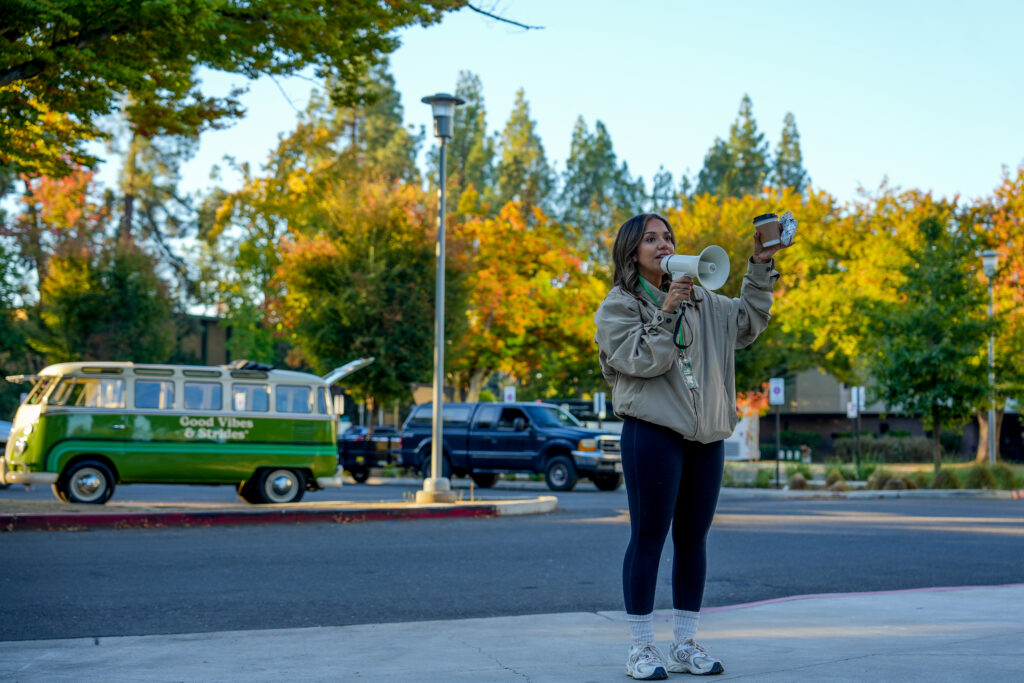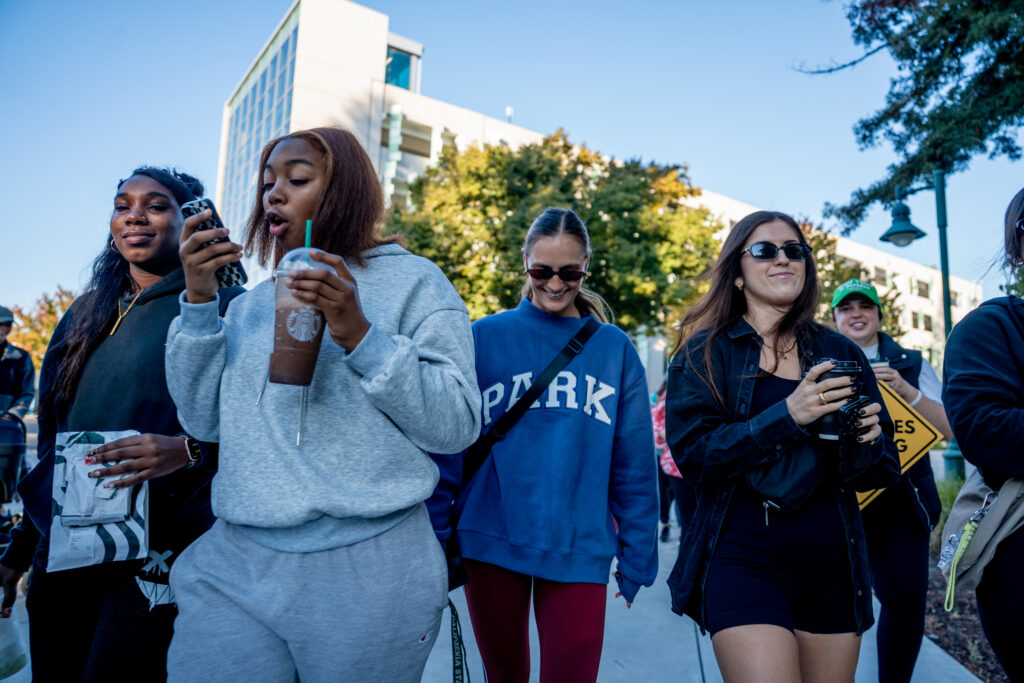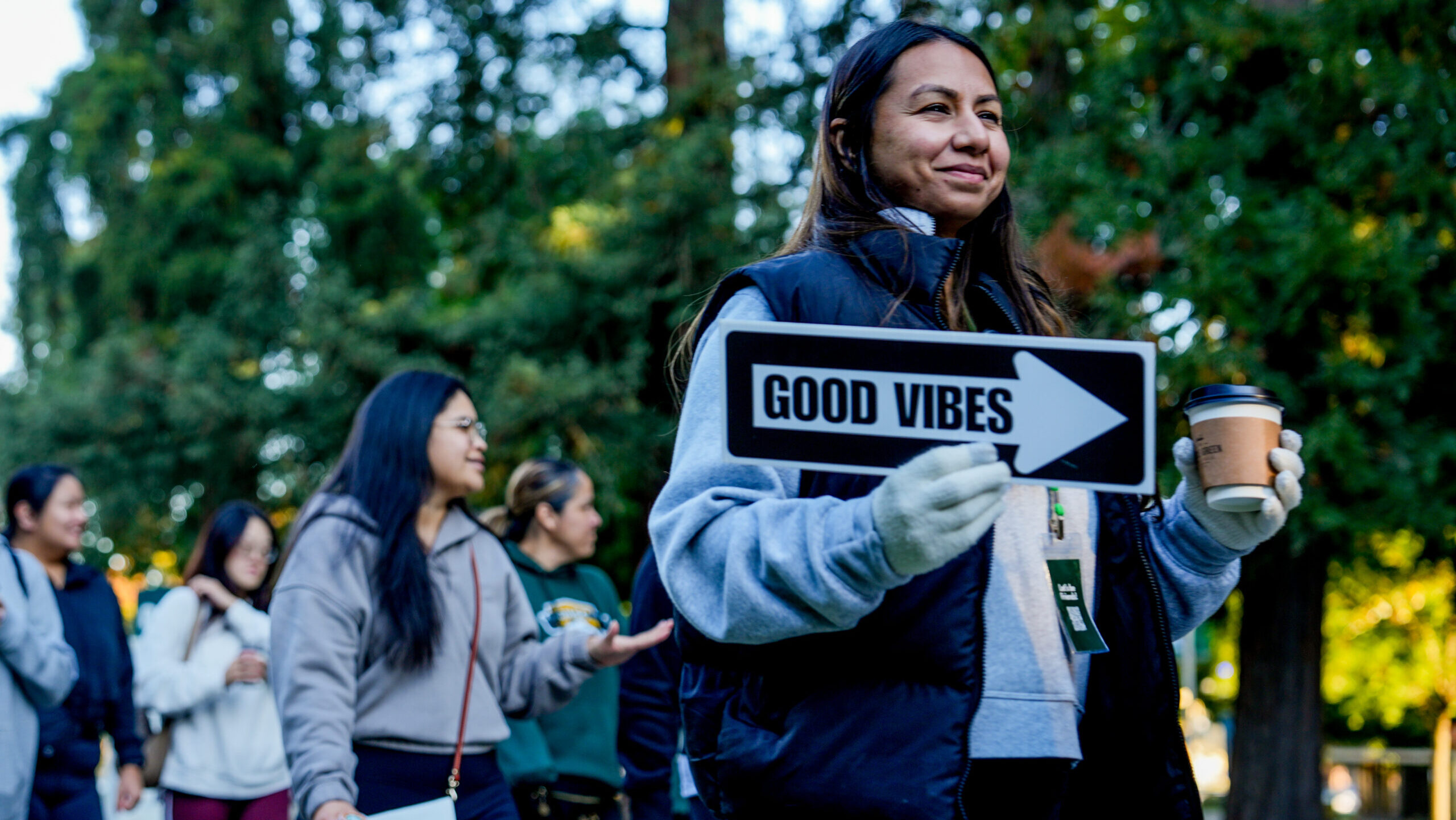The Abridged version:
- A Sacramento resident “fell in love” with walking after receiving a life-changing diagnosis.
- An expert explains the “steps-per-day” fitness trend, exploring the benefits of regular walking and how to successfully integrate it into your daily routine.
- An expert mixes walking with therapy, using the low-impact movement as a metaphor for navigating life’s challenges.
In a dark movie theater with her son and husband, Jennifer Kidwell’s phone vibrated with a notification that would change her life forever.
In October 2022, then-38-year-old Kidwell was diagnosed with rheumatoid arthritis, an incurable autoimmune disease that, at one point, caused pain in nearly every joint in her body. The Sacramento native started taking walks to manage her mental health after her diagnosis, eventually replacing her high-intensity workouts with low-impact movement to manage her weight.
“I just fell in love with walking,” said Kidwell, who walks three hours per week.
Eventually, people joined her.
Each month, Kidwell’s women-only walk club, Good Vibes and Strides, gathers more than 500 people for a 2- to 3-mile walk. The club, which she founded in April 2024, is steeped in community and movement. She offers free themed group walks across the region with picturesque routes, music and giveaways.
Growing popularity of walking as a form of exercise
Walking is an accessible physical activity that’s taken the spotlight in fitness trends this year, and its benefits back up its growing popularity.
From compact treadmills and weighted vests to niche walking styles and smart rings, walking is regarded as the most popular form of exercise. Dr. Shideh Chinichian, a family medicine specialist at Dignity Health Mercy Medical Group El Dorado Hills, said the activity is “uniformly good for everyone.”
Research shows that regular walking is linked to longevity. Going on a walk decreases the risk of heart disease and cognitive impairments, while improving mental health, sleep and immune function.
“Walking is perfect because almost everyone can do it and everyone can personalize it to their needs,” said Chinichian, who walks at least 8,000 steps per day.

Is walking good enough exercise?
A sweaty, high-intensity exercise that leaves behind sore muscles is often a marker of a good workout.
While that’s the preferred choice by many, health experts, including Chinichian, say that walking is also a good form of exercise that comes with a host of perks.
According to the U.S. Centers for Disease Control and Prevention, at least 150 minutes of brisk walking per week is considered a moderate-intensity workout and meets the federal health agency’s guidelines for aerobic physical activity.
While you may not experience a significant heart rate increase or muscle soreness after walking, Chinichian said, your body is still benefiting from the movement. Going on a walk, she said, decreases cortisol levels, increases endorphin levels and mindfulness, and helps build some bone and muscle.
The low-intensity activity has also been proven to counteract the effects of weight gain, curb sugar cravings, reduce the risk of breast cancer and ease joint discomfort, according to a 2023 Harvard Health Publishing article titled “5 surprising benefits of walking.”
Personalize your walking goals
Kidwell, who’s been active her entire life and often trained vigorously, said she never regarded walking as a true workout until she received her arthritis diagnosis. Today, walking is one of her primary forms of exercise.
“I used to almost torture my body,” Kidwell said. “Now I feel like with this age and just this portion of my fitness journey, I’m just more intuitive to what my body is needing.”
You can personalize your walks to your fitness level by adjusting the intensity of the movement through pace and incline.
“It’s not always about pushing weights and sweating,” said Chinichian, who’s also certified in functional medicine. “We need to have our hormones in balance and have our neurotransmitters in balance just as much.”

Do I need to walk 10,000 steps a day to see health benefits?
Post-meal walks, laps around the office, and swapping the elevator for the stairs.
The 10,000-step goal is widely regarded as the daily target for optimal health, but its origins are less than scientific.
The lofty step goal’s beginnings can be traced to a pedometer sold ahead of the 1964 Tokyo Olympic Games, according to Indiana University Health. The name of the step tracker translates to “10,000 steps meter.”
While Chinichian said 10,000 steps is a “solid goal,” hitting at least 8,000 steps daily boasts all the health benefits of walking.
A study funded by the CDC shows that the risk of premature death due to chronic conditions for adults under 60, including cardiovascular disease and certain cancers, plateaued at about 8,000 to 10,000 steps per day. The risk for adults 60 and older plateaued at approximately 6,000 to 8,000 steps per day. Some studies show that even 4,000 steps a day can have a positive effect on your overall health.
Walking and mental health
For Chinichian, Kidwell and many others, going on a walk is as beneficial physically as it is mentally and emotionally.
You’ve probably heard that going on a walk gets you out of your head, and it’s true. Along with the list of physical benefits of walking, putting one foot in front of the other is proven to boost your mental health.
Soon after receiving her arthritis diagnosis, Kidwell started walking along the American River Parkway in Sacramento County to relieve symptoms of stress and restlessness. Her walks quickly turned into an “uplifting time” grounded in nature and prayer.
“It was so peaceful for me. … I realized that it calmed my mind,” she said.
Research suggests that aerobic exercises such as walking reduce anxiety and depression by potentially increasing cerebral blood flow and influencing the body’s response to stress, as well as producing distraction, self-efficacy and social interaction.
‘Walk and talk’ therapy
Lori Roberto, a licensed clinical psychologist in the Sacramento area, mixes counseling with walking to bring her clients a shared experience of nature, movement and conversation.
Roberto integrated “walk and talk” therapy into her private practice nearly eight years ago, meeting clients at her Campus Commons office for roughly an hour of side-by-side communication along the American River Parkway. Going on a walk, she said, can also be a metaphor for momentum, representing how people navigate life’s challenges.
“Let’s say you’re feeling really stuck in your life. … Going on a walk can mean something,” said Roberto, who specializes in health psychology and clinical hypnosis. “It means I’ve gotten myself up and out and I’m, quote, ‘doing something.'”
Similar to her traditional office setting, Roberto said she hopes her clients leave her walking sessions “feeling something different,” whether it’s hopefulness, inspiration, clarity or relief.
“Walking, too, I think, can be very much a mindful process,” she said.
Mindful walking is described as being in tune with your body, mind, breath and environment while in motion, according to Loma Linda University Health, a California-based academic medical center.
This could look like turning off your phone, Chinichian said, and tuning into your environment.

How can I make walking more enjoyable?
Regular walking, Chinichian said, is an easy routine to add to your life because it’s versatile. The key to consistency is finding the joy in it.
Some walkers meditate, listen to music, chat on the phone or take photos while in motion. Others make it a social event and ask a friend to tag along or join a walking group.
Brianna Taylor is a regular contributor, covering Health and Wellness for Abridged.

